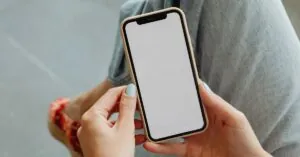Table of Contents
ToggleEver had that sinking feeling when your iPhone decides to play hard to get with your contacts? One moment you’re ready to chat, and the next, you’re left wondering why your best friend’s texts are MIA. It’s like your phone’s taken a sudden vow of silence, blocking people like it’s auditioning for a reality show called “Survivor: Contact Edition.”
But don’t worry, you’re not alone in this tech-induced drama. Many iPhone users find themselves scratching their heads, asking, “Why is my iPhone randomly blocking contacts?” From quirky settings to sneaky software glitches, there’s a comedy of errors at play. Let’s dive into the mystery and uncover the reasons behind this baffling behavior, so you can get back to those important group chats and avoid the awkward silence.
Understanding Contact Blocking on iPhone
Unexpected contact blocking on iPhone can cause frustration. Users often miss important messages or calls due to this issue.
Common Reasons for Blocking
Software glitches frequently cause contacts to be blocked. Settings changes may occur during software updates, leading to unintended contact restrictions. Additionally, spam filter features might mistakenly classify legitimate contacts as unwanted. High user requests can also flood Apple’s systems, resulting in erratic blocking behavior. Understanding these potential triggers can help users identify the exact cause behind the blocking.
User Error
User error often contributes to contact blocking incidents. Accidental blocking can happen when scrolling through contact lists or using the blocking feature unintentionally. Some individuals might confuse contact settings while adjusting call preferences, leading to misconfigurations. Familiarity with the iPhone interface is crucial; a simple mistake can alter communication channels. Regularly reviewing blocked contacts ensures important connections remain intact and functional.
Troubleshooting Steps
To resolve the issue of an iPhone randomly blocking contacts, users can follow several troubleshooting steps. These methods target common problems and can restore normal functionality.
Checking Settings
Inspecting the iPhone settings often helps. First, navigate to Settings, then tap Phone. Examine the block list under Blocked Contacts; remove any unintended entries. Next, review your Call Blocking and Identification settings. Disable any options that might inadvertently mark numbers as spam. Spam filters may recognize legitimate contacts incorrectly. Ensure that Do Not Disturb mode isn’t accidentally allowing calls from unknown numbers. This check can clarify the source of the blocking problem.
Restarting Your Device
Restarting the device can refresh its operating system. Holding the side button and volume down button will prompt the slide to power off option. After powering down, wait for at least 30 seconds before turning the device back on. This action clears temporary glitches affecting phone functionality. Many users find that a simple restart resolves minor issues, including unexpected contact blocking. Rebooting ensures any recent updates or settings changes take effect properly. Regular restarts can improve overall performance by refreshing the system.
Preventing Future Blocking
To avoid the random blocking of contacts on an iPhone, users must take proactive measures. Regular management of settings and updates can ensure seamless communication.
Managing Contact Permissions
Adjusting contact permissions is crucial for preventing unintended blocking. Users should navigate to the Settings app, select Privacy, and then choose Contacts. It’s important to review which apps have access to contacts and modify permissions accordingly. Allowing access only to necessary applications reduces the likelihood of interference with contact communication. Activating ‘Contacts’ for messaging apps prevents them from filtering important numbers incorrectly. Periodically examining these settings ensures that key contacts remain accessible.
Software Updates
Staying current with software updates significantly impacts iPhone performance. Software updates often include bug fixes and enhancements that address glitches causing random blocking. Users can check for updates by going to Settings, selecting General, and tapping on Software Update. Installing the latest version of iOS enhances stability and offers new features that improve overall functionality. Scheduling regular checks ensures that the device benefits from the most recent improvements and security measures. Keeping software up-to-date minimizes risks associated with outdated systems, fostering reliable connections with contacts.
Addressing the issue of an iPhone randomly blocking contacts is essential for maintaining effective communication. By understanding the potential causes and implementing the suggested troubleshooting steps users can regain control over their contact lists. Regularly reviewing settings and managing app permissions can significantly reduce the chances of accidental blocking. Staying updated with the latest software versions is equally important as it ensures the device runs smoothly and minimizes glitches. With these proactive measures in place users can enjoy a seamless experience and stay connected without interruptions.




